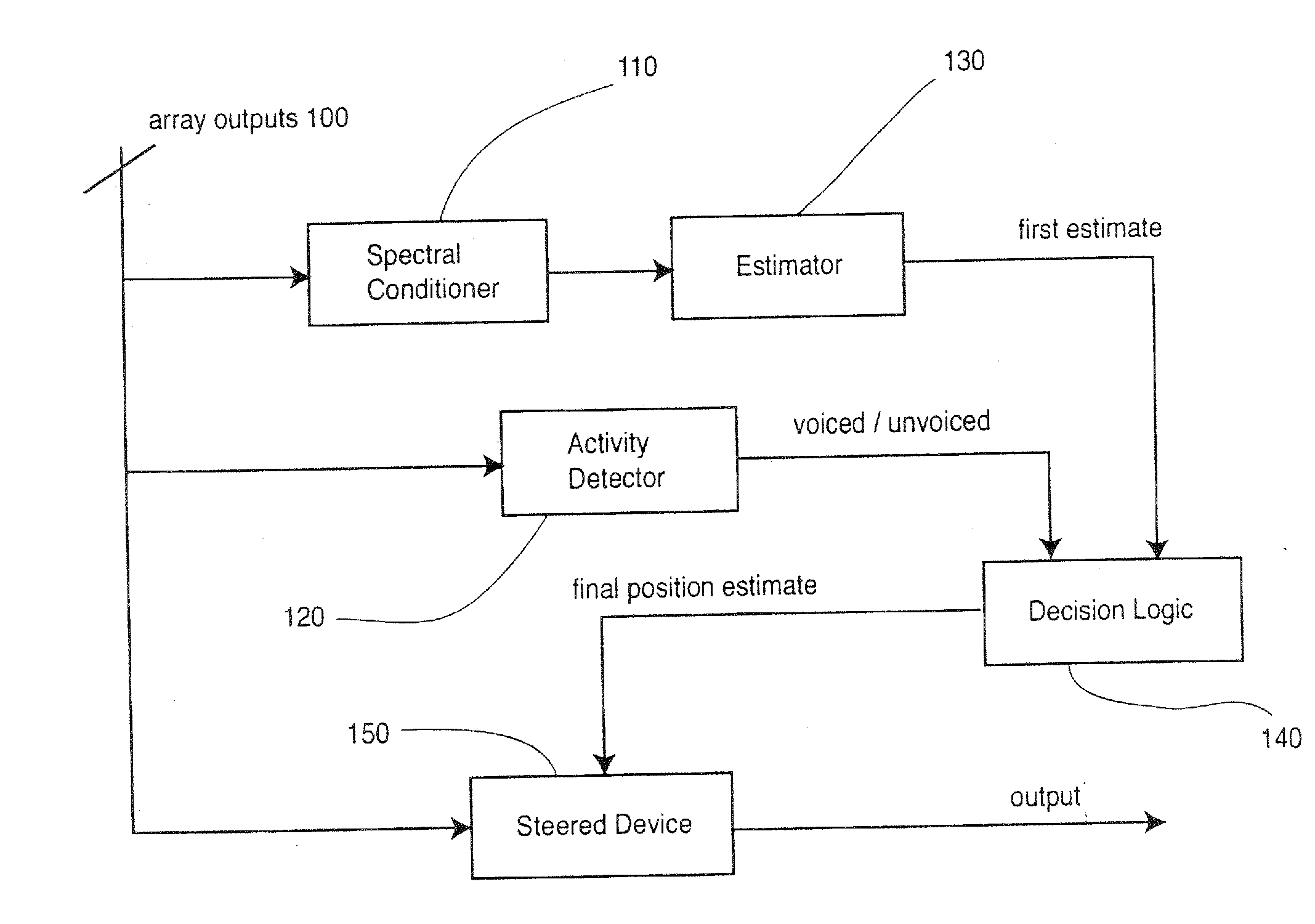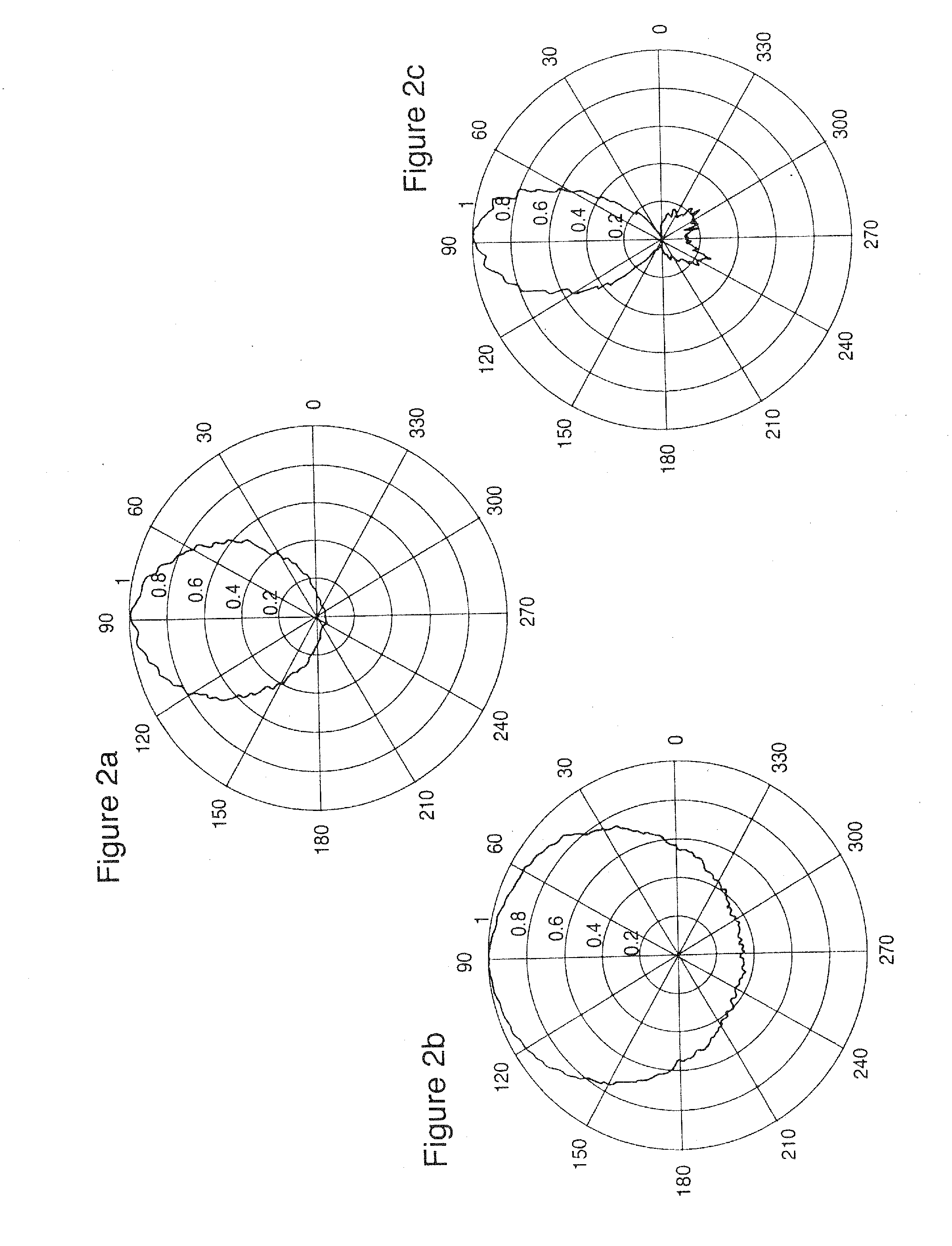Method and apparatus for locating a talker
a technology for talking and talking, applied in the field of audio systems, can solve the problems of inability to distinguish between talkers and noise sources, fraught practical difficulties in the localization of acoustic sources, and the most known locator estimator algorithms, etc., and achieves faster talker localization, less computational power, and improved the effect of estimator algorithm performan
- Summary
- Abstract
- Description
- Claims
- Application Information
AI Technical Summary
Benefits of technology
Problems solved by technology
Method used
Image
Examples
Embodiment Construction
[0014] With reference to FIG. 1, a talker localization system is provided in accordance with the present invention, including an array 100 of microphones, a spectral conditioner 110, an activity detector 120, an estimator 130, decision logic 140 and a steered device 150. It is believed that while some components of the illustrated embodiment are known in the art (e.g. the estimator 130 and activity detector 120), the overall combination of elements is new, as are the addition of spectral conditioner 110 to the estimator 130, and the specific design of the decision logic 140, as described in greater detail below.
[0015] The array 100 includes a number of well-known circular microphone arrays, with the microphones covering hundreds of segments of a 360.degree. array. It is common to use five or six microphones per array, although the number of microphones may vary. The signals from microphone array 100 are fed to activity detector 120, spectral conditioner 110 and steered device 150. ...
PUM
 Login to View More
Login to View More Abstract
Description
Claims
Application Information
 Login to View More
Login to View More - R&D
- Intellectual Property
- Life Sciences
- Materials
- Tech Scout
- Unparalleled Data Quality
- Higher Quality Content
- 60% Fewer Hallucinations
Browse by: Latest US Patents, China's latest patents, Technical Efficacy Thesaurus, Application Domain, Technology Topic, Popular Technical Reports.
© 2025 PatSnap. All rights reserved.Legal|Privacy policy|Modern Slavery Act Transparency Statement|Sitemap|About US| Contact US: help@patsnap.com



